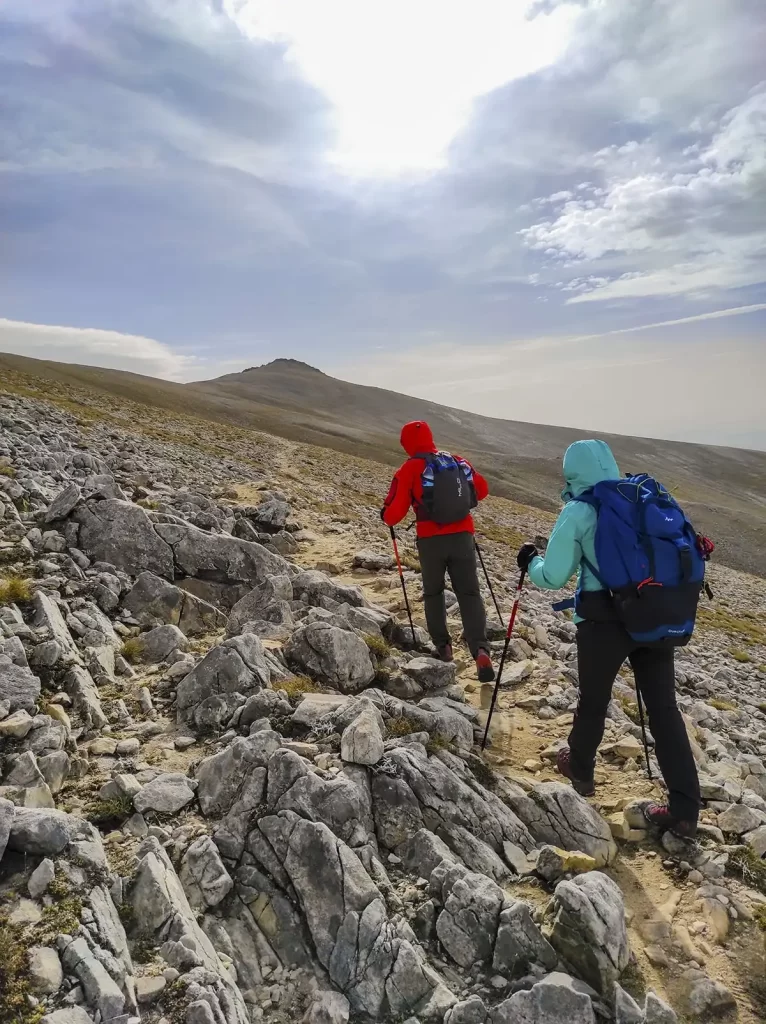Step-by-Step Guide: How to Choose the Right Trekking Boots
Do you long for a break from your monotonous daily routine and crave spending more time in nature? That’s fantastic! However, to do so, you’ll require some equipment, and the most important of these is trekking boots. No matter if you’re hiking through nature, climbing mountains, or navigating city streets, we spend a considerable amount of our day on our feet. Even if we’re unaware, the health of our feet affects our overall well-being. Hence, it’s crucial to take certain factors into account when selecting trekking boots and making the right decision. If you fail to do so, the boots you purchase will be of no use, and you’ll be unable to enjoy the activity, putting your health in danger.
Before we delve into the key considerations for selecting trekking boots, we must first address a critical issue: how to try on trekking boots. Once we answer this query, we’ll share the key factors for choosing trekking boots.
Tips for Trying on Trekking Boots
Trying on trekking boots is an essential part of choosing the right pair for your needs. To find the perfect boots for your hiking or outdoor activities, it’s important to pay attention to some details while trying them out. To simulate the conditions of your activity, it’s recommended to try on the boots while wearing the socks you plan to use during the activity. Take a few laps around the store and try walking on a slope to get a feel for the boots. Keep in mind that the thickness of your socks is one factor that can affect the fit and comfort of your boots.
How to Determine the Right Size of Trekking Boots?
Finding the perfect size of trekking boots is crucial for a comfortable and safe outdoor experience. It is recommended to select boots that are half or one size larger than your regular shoes for maximum efficiency and comfort. However, the sizing may vary depending on the design of the boots you choose. To determine the correct size, follow these steps:
- Tie the laces tightly, ensuring they are not cutting off blood flow to your ankles.
- There should be at least one finger space between your big toe and the toe of the boot. Check by inserting your finger into the gap behind your boot.
- Your foot should fit snugly inside the boot, with no room for it to move around.
- Your heel should rise approximately 3-4 mm in the boot to protect your toenails and heels from blisters and nail fall.
By following these guidelines, you can find the right size of trekking boots that will provide comfort and protection during your outdoor adventures
Breaking in Your Boots: Why You Should Wear Them Before Hitting the Trail
Before embarking on a hike or trek, it’s essential to break in your new boots. Wearing them for the first time on the trail can cause discomfort, blisters, and even injuries. Instead, wear your boots in the city for at least a week before your planned activity. This will help open up the boot and allow it to conform to the shape of your foot. Walking a distance of 15-20 km is a good way to break them in, but make sure you choose a suitable surface. Walking on asphalt with boots made for soil can cause unnecessary wear and tear on the soles.
How to Care for Your Trekking Boots?
Maintaining your trekking boots is just as crucial as choosing the right pair. Proper maintenance can significantly extend the lifespan of your boots. When you return from an activity, the first thing you should do is clean your boots. The cleaning process will depend on the degree of soiling.
If your boots are covered in mud, first knock off the coarse mud, and then clean them under running water with a soft brush. Avoid pressing too hard because this can push small particles into the seams and clog the pores of the lining, hindering the boot’s breathability. After cleaning, allow your boots to dry at room temperature after draining any excess water.
For lighter activities, simply running water over the boots may be sufficient. It’s important to note that even if you’ve worn your boots in the snow, you should clean them with fresh water. Snow water can cause severe damage to your boots.
To further care for your boots, use a waterproofing spray to protect them from moisture and dirt. Don’t forget to remove any dirt and debris from the soles after each use, as they can affect your grip and increase the risk of slipping. Finally, store your boots in a cool, dry place, away from direct sunlight, to prevent any damage.
Don’t Forget These While Using Your Trekking Boots
When it comes to using your trekking boots, it’s important to take good care of them to ensure their longevity. Regular maintenance after each activity is crucial. Here are some things to keep in mind:
- Your boots have a finish that helps water slide off. However, over time, this finish wears out, and your boots can start to absorb water. This doesn’t necessarily mean your boots are leaking, but it will make them heavier. To prevent this, there are water-repellent solutions available in the market that can restore the water slide of your boots. Consider using them.
- Always wear socks with your boots, and choose high-quality socks that are suitable for the activity you’re doing.
- Keep your nails trimmed. Uncut nails can damage the lining over time, causing the boots to take in water.
- Avoid using a dryer, heater, or exposing your boots to direct sunlight, as this can cause them to crack and take in water. It’s best to let your boots dry naturally at room temperature.





